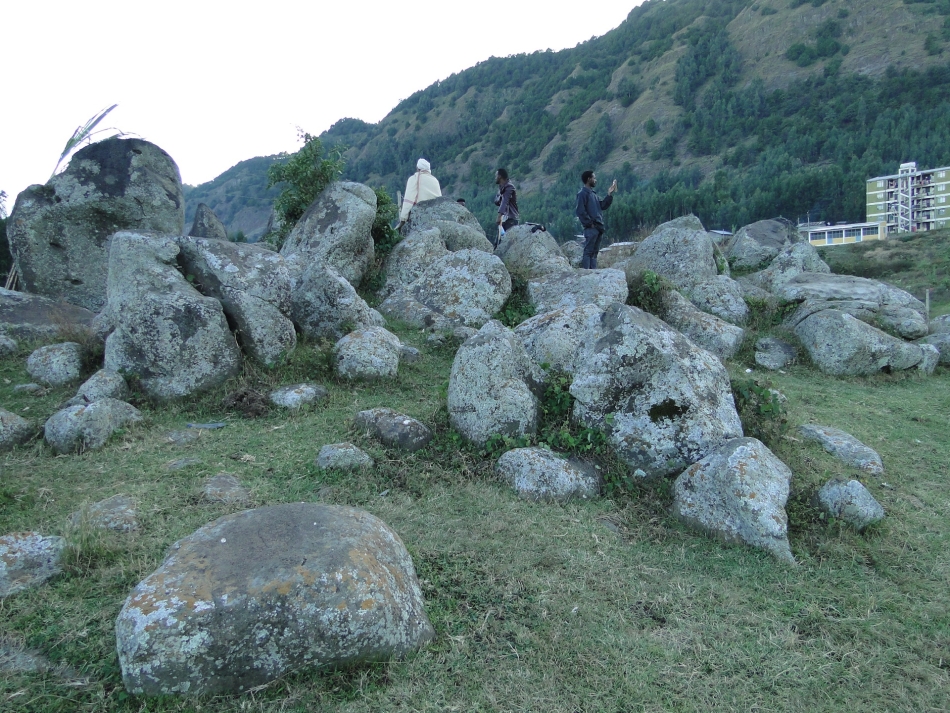Some of the megalithic sites in the region, particularly the stelae found in the vicinity of Debre Berhan, were visited and noted by travellers such as a Frenchman Paul Soleillet in 1882 (Soleillet, 1886), and an Italian, Antonio Cecchi, in 1886. A century later, in 1982, French archaeologist Francis Anfray visited the stelae that Soleillet had documented earlier and some other megalithic and medieval sites in the Menz area (Anfray, 1983). In 1986, a team of archaeologists from the Ethiopian Heritage Authority (then Centre for Research and Conservation of the Cultural Heritage of Ethiopia) conducted a quick survey on the stelae field of Gadelomeda (Tekle Hagos, 2000). A French archaeological rescue team led by Bertrand Hirsch visited this same site in 1999 and conducted test excavations (Poissonnier & Hirsch, 2000). In 1997, a survey specifically devoted to the megalithic sites was started by an Ethio-French team led by François-Xavier Fauvelle that continued intermittently up to 2008, signaling some of the major megalithic sites in the districts of Menz Mama, Menz Gera, and Menz Qeya: about ninety megalithic sites were identified in the aforesaid three areas (Fauvelle-Aymar et al., 2007). The archaeological campaign conducted at the royal camp and church sites called Gebriel in Meshale Maryam also included survey and excavation of megalithic monuments (Derat & Jouquand, 2017). Test or rescue excavations were carried out at sites such as Qopros, Ṭaṭar Gur, Meshale Maryam, and Ketetiya (Fauvelle & Poissonnier, 2016).
Regarding the typology of artifacts collected, ceramic is dominant. The discovery of intact potteries enabled the researchers to identify the peculiar features of the Shay culture pottery. The presence of beads among the burial goods was taken as one of the indicators for the “pagan”, or rather, traditional-religious, nature of the culture, because the presence of goods accompanying multiple inhumations is not common in either Christian or Islamic traditions. There are also objects made of different metals. The source of imported elements among the collected artefacts was the other issue that interested the researchers: typo-chronological comparison enabled them to trace their origin from different countries in the Far East such as China and Korea, South Asia as well as the Middle East. The presence of these imported objects led the researchers to think of the trading networks of the Shay culture society with the Muslim kingdoms to the South and East of the Central Highlands. Additionally, four radiocarbon (C-14) dates were generated from charcoal samples from Ṭaṭar Gur in Menz and Qetetiya in Wollo. Based on this, the temporal scope of the Shay culture was set between the 10th and 14th centuries. To sum up, the researches in the Shay Culture brought to light a neglected subject in the medieval archaeology and history of Ethiopia. Identification of the typology and chronology of monuments and artefacts was also a great deal. However, as the researchers themselves witnessed, the study of the Shay Culture was not a complete business (Fauvelle & Poissonnier, 2016: 70; Joussaume & Cros, 2017: 249).
(Alebachew Belay Birru, February 2023)

